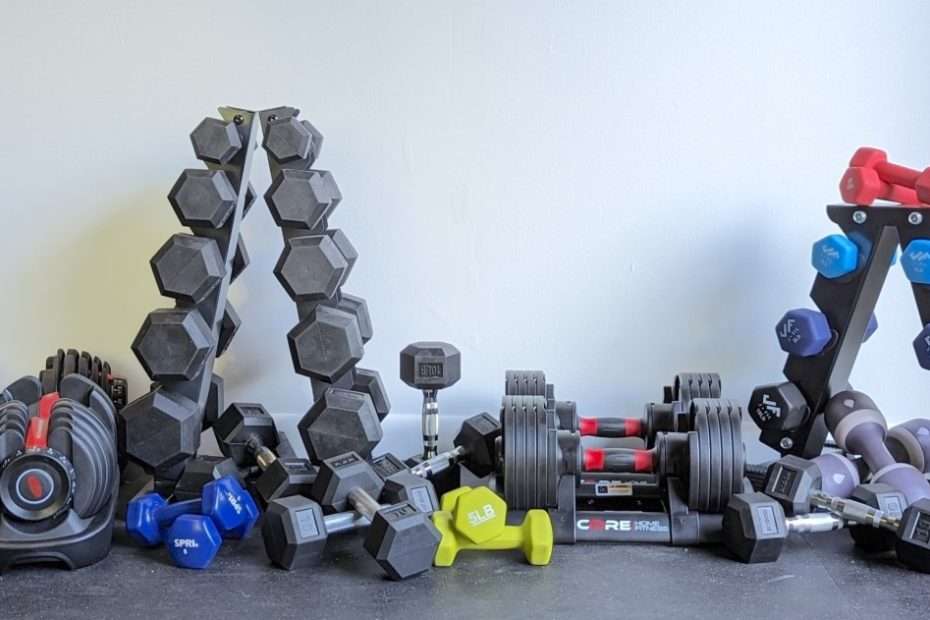The term dumbbell is a well-known word in fitness and strength training, but its origin often sparks curiosity. Understanding why dumbbells are called dumbbells offers a fascinating glimpse into both history and etymology. In this article, we explore the rich history of dumbbells, the evolution of their name, and how this simple tool became an essential part of fitness routines around the world.
Historical Origins of Dumbbells
Dumbbells, in their simplest form, have been used for centuries, dating back to ancient Greece. Greek athletes would often train with hand-held weights, known as halteres, which were used in a variety of exercises, including the ancient Olympic sport of long jump. These early versions of dumbbells were made from stone or metal and resembled a more rudimentary form of what we know today.
However, the term “dumbbell” did not originate until centuries later in 18th-century England. During this time, church bell ringers practiced their craft with equipment that mimicked the motion of ringing bells. To avoid disturbing people with the constant noise, these training devices were created without the actual bell, and thus, they were silent or “dumb” bells. Over time, the phrase “dumb bell” evolved into the single word “dumbbell” that we use today.
The Evolution of Dumbbell Design
From these humble beginnings, dumbbells have undergone several transformations in both their design and purpose. Early dumbbells, particularly in the 19th century, were made of wood or cast iron and featured a basic rod with two weighted ends. This design allowed for a variety of exercises that could build strength, balance, and coordination.
As the fitness industry grew in the 20th century, so too did the innovation in dumbbell design. Adjustable dumbbells were developed, allowing users to change the weight by adding or removing plates. Modern dumbbells are typically made of rubber, chrome, or other durable materials, offering comfort and durability for extended use.
Despite these changes, the fundamental design and purpose of the dumbbell have remained the same – a versatile, hand-held weight used for building muscle strength and endurance.
Why Are Dumbbells Called Dumbbells?
The name “dumbbell” has an interesting linguistic history. The key to understanding why they are called dumbbells lies in the word “dumb”. In this context, “dumb” does not refer to a lack of intelligence, but instead to silence. As mentioned earlier, church bell ringers in the 1700s practiced with “silent bells” to avoid making noise while training. These “silent bells” became known as dumb bells, a term that eventually became associated with the handheld weights used in strength training.
The bell part of the word stems from the resemblance of early dumbbells to the clapper-less bells used by these church bell ringers. The equipment they used for practice had the same shape as a bell but without the sound-producing mechanism, which contributed to the development of the term.
The Role of Dumbbells in Modern Fitness
Today, dumbbells are an integral part of both professional and personal fitness routines. They offer a wide range of benefits, from improving muscle strength to enhancing endurance and flexibility. One of the key reasons why dumbbells have remained popular over the centuries is their versatility.
Unlike machines, which often target specific muscles, dumbbells allow for a more natural range of motion and can be used in an almost limitless number of exercises. Some of the most common exercises include:
- Bicep curls
- Tricep extensions
- Chest presses
- Shoulder raises
- Squats
This versatility makes them suitable for total body workouts, targeting major muscle groups while also improving balance, stability, and coordination.
Dumbbells vs. Barbells: Key Differences
While dumbbells and barbells may seem similar, there are several important distinctions between the two. Barbells consist of a long bar with weights attached at either end, whereas dumbbells are designed to be held individually in each hand. This difference impacts how each tool is used in strength training.
Advantages of Dumbbells Over Barbells
- Greater Range of Motion: Dumbbells allow for a wider range of motion, particularly in exercises like presses or curls. This can lead to better muscle activation and improved flexibility.
- Balanced Strength Development: Since each arm or leg works independently when using dumbbells, there is less risk of developing imbalances in strength between the two sides.
- Versatility: Dumbbells are more versatile than barbells, as they can be used for a wider range of exercises, including unilateral movements, where one side of the body is worked at a time.
When Barbells Are More Effective
However, barbells do offer advantages in some areas, particularly when it comes to lifting heavier weights. Barbells are often preferred for exercises like deadlifts or squats, where using two hands on one bar allows for greater stability and the ability to lift more weight.
Choosing the Right Dumbbells for Your Workout
When selecting dumbbells for your workout, there are several factors to consider, including the weight, material, and adjustability. Beginners may want to start with lighter weights to focus on form and technique, while more advanced lifters may prefer heavier weights for increased resistance.
Some modern dumbbells come with adjustable settings, allowing you to change the weight depending on the exercise. This not only saves space but also provides cost-efficiency, as you won’t need to purchase multiple sets of dumbbells.
Conclusion
The story behind the name dumbbell is as fascinating as the tool itself. From ancient Greece to modern fitness centers, the dumbbell has evolved in both design and purpose, yet its core function remains the same: to help individuals build strength, improve endurance, and enhance overall fitness. Understanding why dumbbells are called dumbbells adds another layer of appreciation for this simple but effective piece of exercise equipment.
